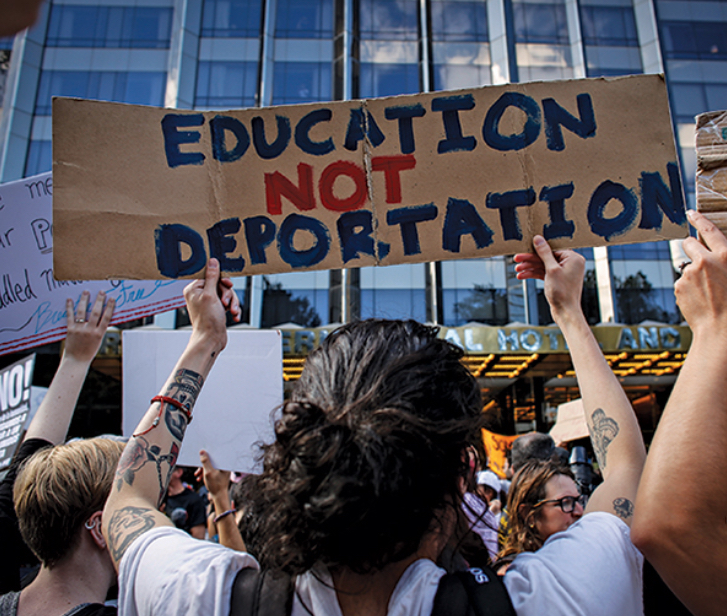By KELSEY GHERING
editor-in-chief
Gannon University students will see a 3 percent increase in tuition costs for the 2018 fiscal year due to a projected decrease in international student enrollment and increases in utility costs.
The Student Government Association (SGA) discussed the university budget Tuesday with Linda Wagner, vice president of finance and administration, and members of the president’s office.
Gannon president Keith Taylor, Ph.D., said this year has been a tough year.
“We would love to continue to grow [the university], but this is not the year to do that,” Taylor said.
Besides a climb in tuition costs for students, Gannon is anticipating a 16 percent increase in health insurance premiums for employees.
To combat this becoming a pay cut for employees, limited promotions will be made among faculty with little or no expected pay raises, Taylor said.
Students in the College of Humanities, Education and Social Science (CHESS) will pay $890 more per year and students in the Health Sciences and engineering colleges will pay $940-$960 more per year.
Brian Pierce, a junior social work major, said that number stresses him out.
“That makes me unhappy,” Pierce said. “I think I pay enough to go to Gannon and I don’t see why tuition needs to go up.”
He said he noticed campus projects like the electronic maps placed on campus, but argued the old ones were fine.
Still, Gannon is ranked No. 9 for lowest tuition among similar schools, Wagner said. The heightened cost is to help compensate for the decline in international student admissions and costs of recent projects, like the Nash library and the Ruskin, Fla., campus.
There will be about a $3 million increase in utility costs to operate the renovated Nash library, which will open in January 2018, and connect its services to the internet.
Wagner said construction for the library is on schedule and interior demolition is completed. She showed pictures of improved window designs for the third floor that will bring more light into the study spaces at Nash and give students a view of campus.
The decreased enrollment of international students has nothing to do with international students, Taylor said.
“The U.S. government had issues with other institutions that were not using visas properly,” Taylor said.
He gave the example of students who come to the U.S. on a student visa but go straight to work instead of attending classes. In reference to the immigration ban, Taylor said Gannon will focus its energy on things it can control, like recruitment.
“The plan continues to be how to broaden recruitment from other countries,” Taylor said. “We build a plan, and then we build contingencies around that plan. [There are] contingencies around Asia, China and Vietnam.”
Contingencies serve as a “plan B” for the budget, and are costs accounted for as a regular expense, Wagner said. The contingency amount is part of the budget that will only be used in emergency cases, as in capital contingencies that may cover the cost of unexpected utility costs.
Taylor also stressed that Gannon’s global student population, which includes about 20 students from the seven countries on Trump’s immigration ban and makes up 18 percent of the student population, is about more than students paying for tuition.
“We’re trying to build an environment of cultural awareness,” Taylor said.
“This is an intentional decision to diversify our campus.”
KELSEY GHERING
[email protected]












Galled Graduate • Feb 12, 2017 at 9:49 pm
As a May ’16 graduate, I wish I could say that I am surprised that the cost of tuition is increasing — again. It seems like every year the cost of tuition increases, but the number of benefits students receive continue to be less and less. I was a part of the health sciences, so if I was told that my tuition would be increasing just because of my chosen career path, I’d be enraged and quickly looking for other schools who would accept the most transfer credits from this money hungry school.
There are many things on campus that need to be updated. I agree with Mr. Pierce 100%: the electronic maps are extremely unnecessary. They are going to be targets of vandalism and become neglected just like the old kiosks. Not only are the new kiosks unnecessary, but so was the stupid knight figure that was erected in the football field — talk about useless! The last addition that I found to be a waste of our tuition money was the LED lamps that were put along the SINGLE BLOCKS from Gannon if you are heading west.
Maybe Gannon should start doing more budget cuts when it comes to all the athletic scholarships they handout. Or maybe they should discontinue their contract with Mets, because if you know anything about Gannon, the food options are horrendous. Look at Behrend: they employ their own students to work and they are open for longer periods of time. There is already limited work study positions available. I’m sure that Gannon paying their students minimum wage would be a lot cheaper than a contract with Mets.
Gannon has been nothing but a nightmare disguised as a happy, helpful vacation from home. I can count on one hand the number of professors at this college that actually care about their students. Out of the two academic advisers I had?? Neither of them cared enough to help. The first adviser was too far up her butt about her recent marriage to care for her students, but you better believe she was quick to dismiss me from my program from being 0.001 off the GPA cut off. The second? She was too concerned about her higher level courses to actually listen to students. I saw my file had notes on what I told her at meetings; she knew nothing else about me. A fraternity brother of mine was forced to put medical school on hold for an additional year when his selfish adviser failed to send out his application materials because the adviser was quitting their job. So when Gannon advertises about close student-professor relations… I cannot help but get bitter and angry.
To conclude my lengthy rant, I cannot help but regret attending this college. I strongly believe I received far less than what I paid for to attend this college — sub-par does not even begin to give it justice. College students are attending this school because they want to better their lives with well paying jobs, but Gannon only sees education as a means of business. Now that I am beginning to pay my loans back, I have a monthly reminder of how angry I am that I attended this school.